- Home
- Paul Christopher
Red Templar Page 2
Red Templar Read online
Page 2
The monastery had the typical look of most Templar sites Holliday had seen, as much fortress as a place of religious enlightenment. A high stone wall surrounded a round church, its windows doubling as slits for archers. There was a refectory behind the church, presumably with the kitchens below, and a bleak-looking windowless chamber that was probably a charnel house for depositing the bones of monks who’d died here over the past eight hundred years.
Ranged around two sides of the fortress walls was a cloister with cells for the monks, and in the center of the cloister a courtyard with a well and a statue. For a monastery dedicated to Saint Simeon Stylites, the hermetic who set himself upon a stone column to deny himself temptation. Simeon himself would have been an appropriate subject for a sculpture, but instead there was a life-size figure of a horse and two riders, one of the most enduring symbols of the Templar Knights. The statue was in bronze green with age, the walls and church were local pale stone and the roofs were iron gray slate.
Holliday parked the rental car on the gravel beside the death house and woke up Genrikhovich, who still looked a little queasy. Leaving the doors and windows of the Moskvich open to give the vehicle a much-needed airing out, the three men entered the church. It was a simple room, with a single aisle lined with perhaps twenty benchlike pews on each side, the aisle leading to a plain stone altar with a rose window behind it with a rendition of the face of Christ. Each of the four petals of the rose contained the figure of a knight, the familiar Croix Rouge of the Templars on their body-length “kite” shields. Each knight wore a helm and hauberk of chain mail and carried a sword in his right hand. At the feet of each knight was a single word on a ribbon: Aos, Hesperios, Polaris, Octanis. The stars of east, west, north and south. It was certainly no coincidence. The four words were the names given to the four swords that carried the hidden and coded message out of Castle Pelerin and the Holy Land: We are betrayed. The king and the Holy Father conspire against us. Let Sagittarius be the guardian’s inspiration and pray that he be guided by the loins of the bear.
Although the last part of the message remained obscure, its meaning lost in time, the first part was prophetic enough. King Philip IV of France, in the midst of a financially draining war with England, had already expelled the Jews from his country, seizing their assets, and by 1293 was conspiring with his chief political adviser, the Bishop of Bordeaux, Raymond Bertrand de Got, to assassinate the pope, then replace him with the bishop.
As pope, on Philip’s order, de Got would dissolve the Templars and seize their enormous assets in France, thus simultaneously absolving Philip of responsibility for his equally enormous debts to the order. A simple enough plan on the face of it, but it took time to put all the pieces in place, giving the Templars an opportunity to discreetly move the greater part of their wealth out of France and Philip’s clutches, as well as to infiltrate the royal court with well-placed spies. On Thursday, October 12, 1307, there were fifteen heavily loaded Templar ships in the harbor at La Rochelle, the last of the Templar fleet in France. The next day, when Philip’s order to arrest the senior members of the order took effect, the ships had vanished. Their secrets vanished with them.
A monk in the plain working robes of a Russian Orthodox monk was on his knees in front of the altar with a bucket and a scrub brush, cleaning the stone floor as Holliday, Eddie and Genrikhovich entered the monastery chapel. Genrikhovich muttered something to Eddie, and the Cuban turned to Holliday, nodding toward the monk.
“That is the man, Theodore Dimitrov.”
The monk stood as they approached, drying his hands unceremoniously on his water-stained robes. He was much younger than Holliday had expected, no more than thirty or so, slim, dark haired, with a long, narrow face and deep-set eyes as black as Eddie’s skin. He nodded perfunctorily to Genrikhovich, then concentrated on Holliday.
“You are Holliday, the one who knew Brother Rodrigues?” His English had a faint British cast to it.
“Briefly,” Holliday answered, surprised at the monk’s abrupt question.
“You keep the book?”
The bloodstained notebook of names, contacts and coded account numbers given to him by the dying Rodrigues, the codex mystericum to nine hundred years of the ancient order’s history.
“Yes.”
“You keep it safely?”
“In a bank vault.”
“You saw the rose window. You know its significance?”
“It marks the four swords that went out from Pelerin.”
“Who made them?”
“Alberic Fecere,” Holliday responded.
“What is the true meaning of the cross?”
“The four sides of the pyramid, the secret revealed.”
“Which sword was yours?”
“Hesperios,” said Holliday. “The Sword of the West.”
“Which sword did Rodrigues have?”
“Aos, Sword of the East.”
The monk nodded as though Holliday had passed a test of some kind.
“Come with me,” said Dimitrov.
The monk led them to a narrow door to the left of the altar, which he opened with an iron key hanging from his belted cassock. Stone stairs led downward. The monk headed down and the others followed. The stairs led to the chapel crypt. It was a single, barrel-vaulted room lit by a lone clerestory window, which allowed in a bar of sunlight that fell upon the stone effigy of a knight set on a high granite plinth. Instead of a shield across his breast there was a sword. A motto was carved into the plinth, the letters worn with age and time: Non nobis, non nobis, Domine Sed nomini tuo da gloriam.Not to us, not to us, O Lord, but to your name give glory. Beneath the inscription was a circular seal-a double-headed eagle gripping a sword in its talons circumscribed by the inscription: Magister Templaris in Rostov.
The double-headed eagle, a heraldic device used by half the countries in Europe, including Bulgaria, and the central part of the Romanov crest.
“Who was he?” Holliday asked.
“Mikail Alexandreivich Nevsky, the last master of the ‘Rus’ Templars, an illegitimate child and grandson of Alexander Nevsky. He had no place in the hierarchy of his family even though he was a prince, so he joined the order.”
“He carried one of the swords from Pelerin?”
Dimitrov nodded. “Polaris.”
Sword of the North.
4
The monk brought them out of the crypt and led them to a small office in what had probably once been the sacristy of the little church. There was still a large vestment cupboard with beautifully carved and decorated doors against one wall and a table on which stood various gold chalices, patens, ciboria, aspergilla and other liturgical vessels.
There was a plain wooden desk and several chairs set around it. The monk sat behind the desk and gestured to his guests to seat themselves. The only artwork on the wall was a wood-and-gold-leaf-framed icon of Saint Simeon seated on his column. The walls, like the rest of the church, were bare stone.
Tired and more than a little annoyed at the game of hares and hounds he’d been lured into playing for the last ten hours or so, Holliday spoke first. “All right then, Brother Theodore, if that’s what you call yourself, I’ve come a long way on the strength of a name and a Latin phrase. I’d much rather be sitting down to a nice rib-eye dinner at the Plaza right now, which was my previous intention, so let’s see if my side trip to sunny Bulgaria was worth it or not.”
The monk said nothing. He opened the drawer in the desk and withdrew a large manila envelope, pale with age. He slid it across the desk to Holliday, who opened it and removed a single photograph. It showed six men standing in the courtyard of the monastery, identifiable because of the statue. The six men stood in a semicircle examining a plain medieval short sword.
“Do you recognize any of the men in that photograph?” Dimitrov said. “My grandfather was prior then. He took the photograph from the shadows of the cloister. Had they seen him he would have undoubtedly been killed on the spot.”
<
br /> “I recognize three of them,” said Holliday, his heart pounding. A photograph such as this one simply should not exist. “Averell Harriman, the U.S. ambassador to the Soviet Union, Lavrenti Beria, the head of what was then the NKVD, the Soviet secret police, and Molotov, Stalin’s foreign minister. I don’t know who the others are. The man in the business suit on the left looks vaguely familiar.”
The monk spoke again. “That’s because he’s George Herbert Walker, grandfather to President George Herbert Walker Bush, and great-grandfather to President George W. Bush. He was vice president of Harriman’s Wall Street company.”
“The other two?”
“The man with the long beard is Sergey Vladimirovich Simansky, better known as Alexis I, Russian Orthodox patriarch of Moscow and all the Russias. The slim man in the plain brown NKVD uniform with the sidearm is Molotov’s aide, Vladimir Spiridonovich Putin.”
“Putin’s father?”
“Yes. The photograph was taken during the Yalta Conference in 1945. Harriman borrowed Roosevelt’s C-54 Sacred Cow and they flew into Burgas Airport. It was less than a two-hour flight across the Black Sea. They weren’t even missed at the conference.”
“They came for the sword? Polaris?”
“Yes. The abbot, a corrupt man who it later turned out was a Nazi collaborator, gave it to them.”
“But why on earth would they want it? How did they know it was here?”
“Putin’s father had been with an NKVD sabotage squad during the war. He heard about the sword and the story behind it. He in turn told his father, and his father told Stalin.”
“Putin’s grandfather knew Stalin?” Holliday said, not quite believing it.
“Spiridon Putin was Stalin’s cook,” said Dimitrov. “The only man Stalin trusted to prepare his meals. Stalin even brought him to Yalta. Before that he cooked for Lenin, and before that he was a cook for the czar’s family.”
“That’s all very interesting, but it still doesn’t explain why they wanted the sword, and it sure as hell doesn’t explain why the U.S. ambassador to the Soviet Union and a Wall Street financier were interested, not to mention the Russian version of the pope at the time.”
“My grandfather heard Molotov mention the Order of the Sirin,” said the monk. “The zhar-ptitsa.”
“The pajaro de fuego. . the fenix,” explained Eddie.
“The Order of the Phoenix?” Holliday asked.
“It dates back to the time of Yaroslav the Wise and the establishment of the Saint Sophia Cathedral in Kiev. To most Ukrainians, Yaroslav was a hero for making the Orthodox Church truly Russian with the appointment of a Russian metropolitan. To others and to history he was clearly a white supremacist. The charge of the Order of the Phoenix was to bring an all-white Russia and specifically the Ukraine to world domination.”
“A Russian Ku Klux Klan,” said Holliday.
“Far more meaningful than that,” said the monk. “Imagine your Ku Klux Klan with the power of both the state and Church behind it. There are two hundred and twenty-eight million members of the Orthodox Church around the world, the large majority of them Russian-one hundred and twenty-five million, to be precise. It is a number to be reckoned with, Colonel Holliday, especially when it is effectively under the control of the Sirin, the upper-echelon members of the Phoenix order.”
“How many?” Holliday asked, startled.
“Two hundred and twenty-eight million, of which three-quarters of a million are American.”
“That’s a little hard to believe,” said Holliday, his tone skeptical. “But even if it’s true, it still doesn’t explain why Harriman and Walker were there, especially with a monster like Beria.”
“No, it doesn’t.”
Holliday thought for a moment. “Was Beria one of these Sirin?”
“Almost certainly.” The monk nodded. “In fact, it hardly could have been otherwise. Beria joined the NKVD, or Cheka, as it was known then in 1921. The NKVD in its various incarnations virtually ran the order dating all the way back to the 1917 revolution. Perhaps even before.”
“Before?”
“Before the NKVD there was the Okhrana, the czar’s secret police, and secretly members of the order as well.”
“It still doesn’t make any sense. Why would they have been interested in the sword?”
Throughout Holliday’s conversation with the monk, Eddie Cabrera had been keeping up a whispered running translation for Genrikhovich. At the mention of the sword, a word he clearly recognized in English, the Hermitage curator began a frenzied stream of Russian. The man was clearly extremely upset. Finally he stopped and turned to Holliday, his eyes wide and his expression one that Holliday could only conclude was abject fear.
“What’s he so frightened about?” Holliday asked.
“Yay-eech-a!” Genrikhovich blurted.
“The eggs,” translated Eddie. “Something about eggs.”
“What eggs?”
“Faberge!” Genrikhovich said, obviously agitated. “Yay-eech-a Faberge!”
Holliday’s brow wrinkled. The priceless Faberge eggs given to the wife of the czar each Easter. What connection could they possibly have to a compromising photograph taken during the Yalta Conference in 1945, where Churchill, Roosevelt and Stalin agreed to cut up Europe like a birthday cake, and a Templar sword lost to history in the first years of the fourteenth century?
5
Holliday held up a hand. “Okay, let’s stop this right now. Back it up a little.” He looked at Genrikhovich hard, then turned to his friend Eddie. “Ask him how he knew about Rodrigues, and how he knew we were going to be at the Khartoum airport when we were.”
Eddie spun out a long, lilting line of Russian. Watching Eddie speak like a native was almost as strange as being in Dublin and hearing a waiter in a Chinese restaurant take your order in an Irish accent. Coming from a relentlessly upstate New York, blue-collar, Presbyterian background, Holliday was always astounded at people who could speak fluently in two languages, or in Eddie’s case three: Spanish, English and Russian.
Genrikhovich’s response was equally complicated and accompanied by various incomprehensible hand gestures. Dimitrov’s name was mentioned several times. In the end it was a waste of time.
“I can answer for myself, Colonel Holliday,” said the monk.
“Please do.”
“Do you know the name Theodore Svetoslav?”
Holliday dug into his memory banks. The file drawer for Bulgarian history had very little in it, but it was just enough. “Wasn’t he an emperor?”
“He was, between 1300 and 1313. I’m named after him, in fact, Theodore Svetoslav Dimitrov. My family traces back to his on both sides.”
“I’m sure that’s very impressive, but right now I’m not. What’s the connection?”
“As well as being emperor, Theodore Svetoslav was also a friend to the Templars and they to him. At that time much of the old Pilgrim Road from the Holy Land ran through the emperor’s territory. They fought with him in the Battle of Skafida in 1304, less than a hundred miles from here. A Templar saved the emperor’s life at the bridge at the Battle of Skafida. A special Templar.”
“Don’t tell me-the Templar in your crypt.”
“Mikail Alexandreivich Nevsky.” The monk nodded. “From the bloodline of Mikhail Yaroslavich, also known as Michael of Tver or Michael the Saint.”
“I’m not following,” said Holliday.
“My grandfather was a member of the White Templars, as was his father before him and his father before him. As am I.” There was a long moment of silence. Holliday knew what was required of him-it had been one of the first things he’d learned from the notebook Rodrigues had given to him as he lay dying in that volcanic crater in the Azores.
“What do you seek?” Holliday asked.
“I seek what was lost,” answered Dimitrov.
“And who lost it?”
“The king lost it.”
“And where is the king?”
“Burning in hell,” said Dimitrov with a smile. Holliday relaxed slightly. The exchange was almost a thousand years old, devised after the fall of the Templars so they could safely identify one another. The first time Holliday had used it was with Pierre Ducos, the fat little spider of a man who seemed to be at the center of the whole Templar web, living out his years in the little hilltop village of Domme in France.
“I never met Brother Rodrigues, but we corresponded. I was terribly saddened by his death. He was a good man.”
“That he was,” said Holliday, remembering the tall, dark man with the deep-set eyes.
“It was the first time I heard your name,” said Dimitrov.
“From whom?” Holliday asked.
“Pierre Ducos,” replied the monk.
“And he was the one who told you I was in Khartoum?”
“Yes. After Gospodin Doktor Genrikhovich contacted me with his story. I thought I should inform you. I asked him where I might find you and he told me.”
“And what is Gospodin Doktor Genrikhovich’s story?”
“In a nutshell, Gospodin Genrikhovich says that the Faberge eggs in the Kremlin Armoury collection are fakes. He also says that one of the eggs is the lost secret of secrets that allowed the Sirin to invisibly rule Russia for hundreds of years. According to Genrikhovich, if the secret were revealed it could destroy the world.” Dimitrov paused and glanced at the Russian. He turned back to Holliday.
Holliday gave Genrikhovich a long, skeptical look. “And what secret is that?”
Genrikhovich began to babble wildly, throwing his arms around. He looked as though he were having an apoplectic fit, his eyes bugging out, sweat beading on his face and his entire body shaking.
“He does not want me to tell you, not yet, but I feel I must. The key will reveal, among other terrible things, the final location of the Apophasis Megale, the Great Declaration of Simon Magus. The declaration supposedly proves beyond any doubt that Jesus Christ was a mortal man who lived and died as all of us do. And according to Genrikhovich, there is even more that he does not know about.”

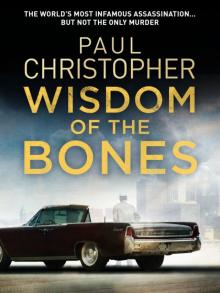 Wisdom of the Bones
Wisdom of the Bones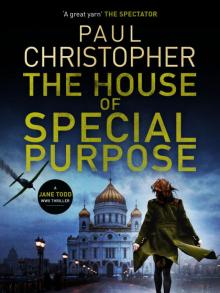 The House of Special Purpose
The House of Special Purpose The Second Assassin
The Second Assassin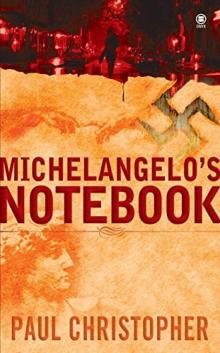 Michelangelo's Notebook
Michelangelo's Notebook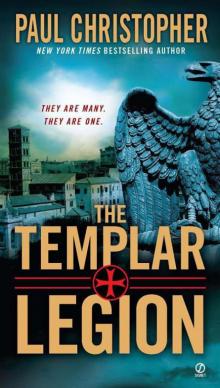 Templar Legion
Templar Legion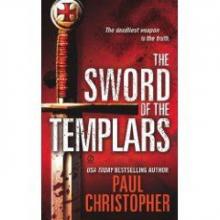 The Sword of the Templars t-1
The Sword of the Templars t-1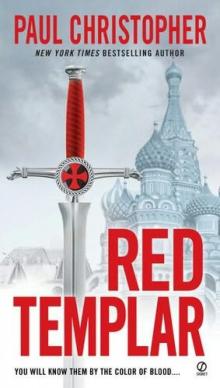 Red Templar
Red Templar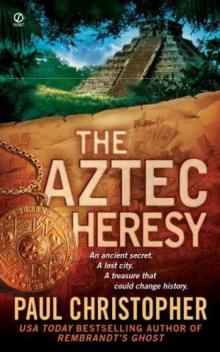 The Aztec Heresy
The Aztec Heresy The Templar Legion
The Templar Legion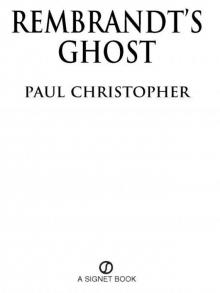 Rembrandt's Ghost
Rembrandt's Ghost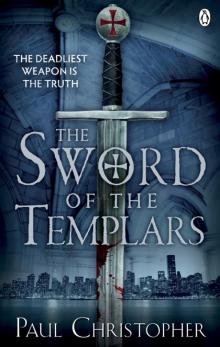 Sword of the Templars
Sword of the Templars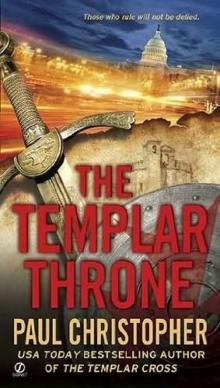 The Templar throne t-3
The Templar throne t-3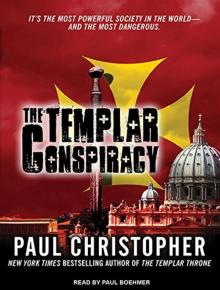 The Templar Conspiracy
The Templar Conspiracy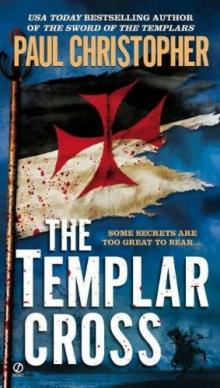 The Templar Cross t-2
The Templar Cross t-2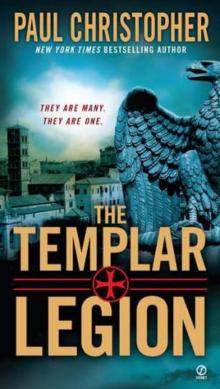 The Templar Legion t-5
The Templar Legion t-5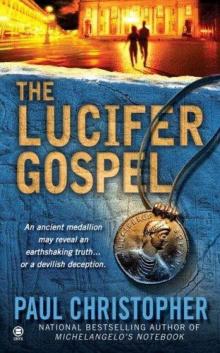 The Lucifer Gospel
The Lucifer Gospel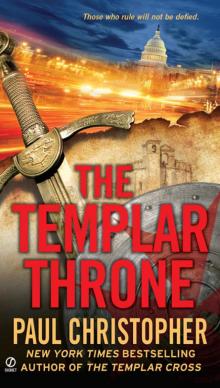 Templar Throne
Templar Throne Michelangelo_s Notebook fr-1
Michelangelo_s Notebook fr-1 The Lucifer Gospel fr-2
The Lucifer Gospel fr-2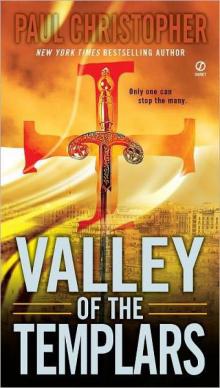 Valley of the Templars ts-7
Valley of the Templars ts-7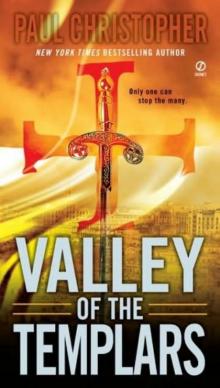 Valley of the Templars
Valley of the Templars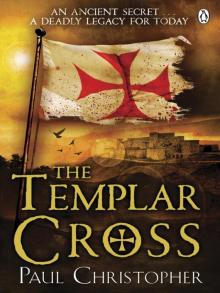 Templar Cross
Templar Cross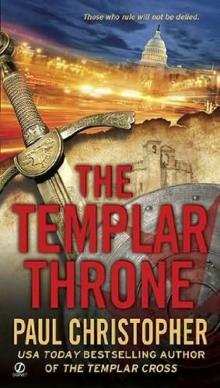 The Templar Throne
The Templar Throne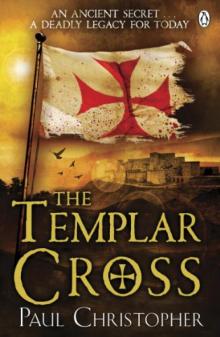 The Templar Cross
The Templar Cross Lost City of the Templars
Lost City of the Templars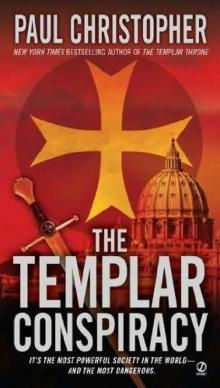 The Templar conspiracy t-4
The Templar conspiracy t-4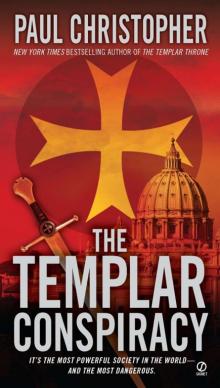 Templar Conspiracy
Templar Conspiracy